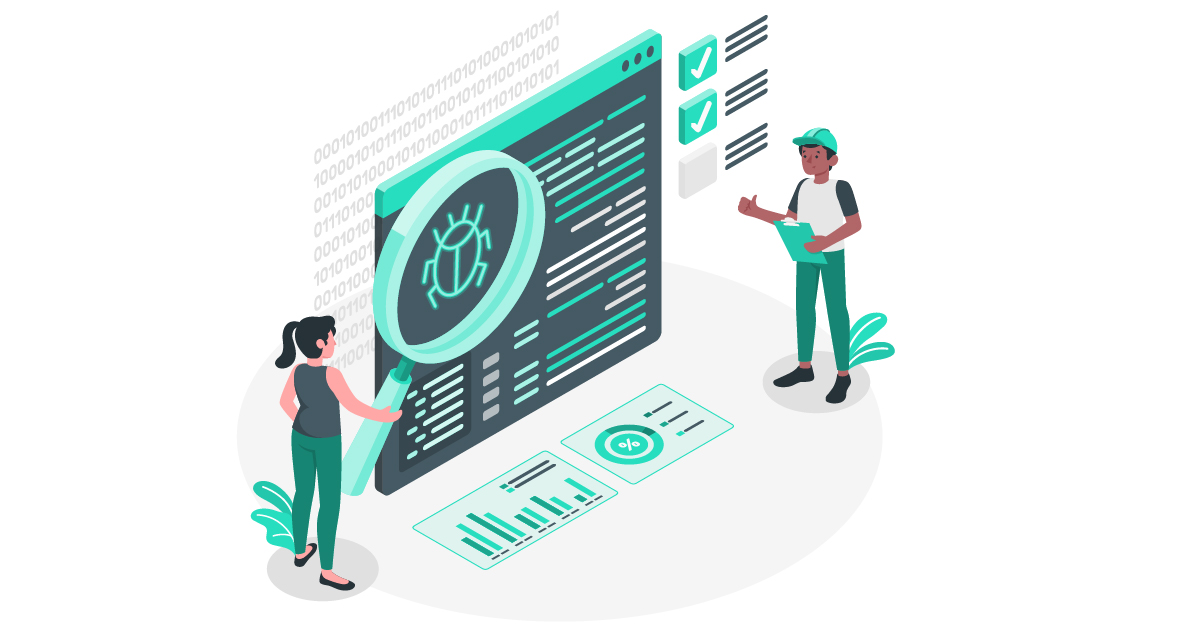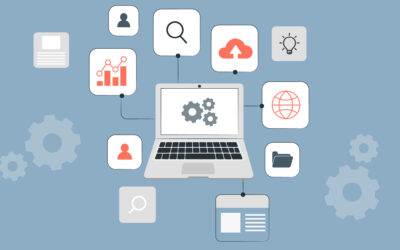Ever witnessed agile teams combining development and testing together to accelerate development–and eliminate bugs/errors/usability issues simultaneously–in the software development cycle? In technical terms, this is referred to as ‘shifting left.’
This method is gaining traction, particularly among the agile teams that wish to roll out projects within the budget, on time, and adhering to the agreed-upon project scope. Plus, this method lays greater emphasis on the way in which the project validates the code instead of blaming improper planning to be the sole culprit.
In this in-depth guide, we will deep-dive to understand everything you need to know about shift left testing, starting with addressing the most basic question:
“What is Shift Left Testing?”
Let’s start at the very beginning and understand what we mean by shift left testing. Quite simply, shift left testing refers to an approach in software testing in which testing is performed earlier in the development cycle. Coined by Larry Smith in 2001, this approach follows the adage: “Test early and often” to prevent issues that may crop up as a result of late testing.
This brings us to the next most important question:
“Why Engage in Shift Left Testing?”
It’s common knowledge that the Waterfall model was used by organizations until project managers started noticing a major flaw within the model–one where critical bugs and issues went unnoticed until the last stage of production. In addition to this, other issues that typically plagued projects included (but were not limited to):
- Sub-optimized and incorrect resource allocation to testing–leading to less involved testers in the initial stages of planning
- Untimely/late discovery of defects/bugs in requirements, architecture, and design–causing time, resource, and cost wastage
- Issues in debugging as more software was produced and integrated
- Reduced time to fix defects found by testing–leading to project postponement
This ultimately paved the way for the shift left testing approach, typically used by agile teams for greater ROI and faster delivery.
The learning: The shift left testing approach led to the shelving of the ‘develop-first, test-later’ strategy. The former allows for continuous delivery testing while the product is being developed. Plus, it encourages a collaborative work environment where testing teams work in close quarters with other key stakeholders of the project–from the product team and project planning team to the marketing team and the development team.
With the basics in place, let’s look at the shift left testing benefits in greater detail.
Top-5 Benefits of the Shift Left Testing Approach
| Key Benefits | Underlying Principle Behind How Shift Left Testing Works |
|---|---|
| Prevents the “bow wave” effect–a pattern of failure where project deadlines are repeatedly missed and the project continues to drift in time | “Test early and often:” As mentioned earlier, identifying defects at a later stage reduces the time required by teams to fix defects. The shift left testing embraces the mantra: “Fix bugs early on”–a strategy that helps prevent the ‘bow wave’ of technical debt. |
| Improves feature velocity and product quality | “Defect prevention:” This approach focuses more on defect prevention instead of defect detection. In simpler words, it helps to get rid of key bottlenecks and defects related to functional and non-functional testing, leading to defect-free and timely release. |
| Encourages conscientious coding by development teams | “Mindset shift:” The shift left approach is all about driving a change in the mindset of the development team and building an effective (and quick) defect feedback loop so that the development team can use the right tools and processes to engage in conscientious coding and responsible development. |
| Significantly lowers defect-fixing costs and costs related to bug detection | “High cost mitigation:” Early defect detection can reduce the cost of fixing them, leading to profitable project delivery. |
| Enhances the efficiency of the overall software development process | “Quality and timely production:” Since testing is done periodically and continuously, the Quality Analysis process does not take up time and the final output reflects high standards. |
Now that you have a good understanding of the key benefits of shift left testing, let’s understand the different types of shift left testing approaches you have at your disposal.
What are the Different Types of Shift Left Testing?
Typically, there are four types of shift left testing you should keep in mind. Here’s a quick walk-through of the shift left testing types:
1. Traditional shift left testing: This type of shift left testing concentrates on unit testing and integration testing (think: deploying API testing and modern test tools).
2. Incremental shift left testing: This type of shift left testing is useful when each increment is also delivery to the customer and operations. Moreover, when both developmental testing and operational testing need to be accelerated, and in instances where you are developing large, complex systems, requiring significant amounts of hardware, this should be your go-to shift left testing type.
3. Agile/DevOps shift left testing: It is common knowledge that agile and DevOps projects generally have shorter sprints. This type of shift left method occurs because the types of testing on the right sides of the earliest sprints are to the left of the corresponding types of testing on the right side of the larger sprints they replace.
4. Model-based shift left testing: The model-based testing tests requirements, architecture, and design models. Plus, the testing begins instantaneously as opposed to waiting for longer periods of time (traditional testing), medium time (incremental testing), or a short time (Agile/DevOps) for the software to become available.
Moving on, let’s look at what shift left translates to in a DevOps environment.
What Does Shift Left Mean in DevOps?
If you’re wondering about what does shift left testing mean in DevOps, keep reading. Here are a few of its defining characteristics:
It typically requires two key DevOps practices:
A. Continuous testing: It involves automating tests and running said tests as early and often as possible.
B. Continuous deployment: It automates the provisioning and deployment of new builds, enabling continuous testing to happen quickly and efficiently.
The learning: When you’re shifting left in the DevOps environment, you’re essentially required to work side by side with the development team to create the deployment and testing processes. Plus, you can reduce production failures by removing operational silos between development and operations. At the end of the day, the primary challenge enterprises struggle with is the mindset and intrinsic work culture.
This brings us to the next most important question:
“What is Shift Left Performance Testing?”
Performance testing is a type of non-functional testing that helps to:
- Identify performance bottlenecks
- Find underlying issues that can cause potential crashes in extreme testing conditions of a production-like environment
Here are some best practices on how you can engage in effective performance shift testing:
- Drive a cultural shift in the work process by making developers responsible for their coding
- Focus on increasing collaboration between the testers and the developers
- Establish a clear communication protocol for seamless collaboration
- Identify KPIs at the module level to boost efficiency and performance
- Automate performance tests to eliminate human errors
- Share the test results across the board to problem-solve quickly and enable quick feedback
- Finally, make sure to select the right tool that can enable a seamless and efficient testing process
The learning: Instead of treating performance shift left testing as an afterthought, businesses need to embrace it from the very beginning of a project and include key stakeholders such as developers, testers, and businesses. After all, tracing and fixing performance as well as functionality issues prior to deployment can turn out to be a costly affair. Enterprises need to continually test for performance, especially with shorter delivery cycles.
In the next section, we will deep-dive to understand:
“What Does Shift Left Testing Mean in Agile?”
Shift left testing has become a critical part of the agile process as it can help to:
- Overcome bottlenecks caused by testing too late in the development cycle
- Identify and fix bugs with Bug Tracking Tools as early as possible
- Introduce higher-quality code right from the beginning
- Save time and resources due to better performance
- Ensure that only well-tested, highly functional apps are published
- Drive greater collaboration between the development and QA team
The learning: Modern teams should integrate tests into every iteration, cycle, sprint, etc. instead of solely testing at the very beginning. In other words, they need to engage in continuous testing.
The real question then becomes:
“What is Continuous Testing?”
Continuous testing basically synchronizes testing with Development and Ops to accomplish the development and business goals in tandem, as part of the requirement management software delivery pipeline. Remember that the QA team can help in driving continuous testing by:
- Accelerating the deployment process
- Ensuring that the bugs are resolved by the development team at the right time
- Pushing the changes to the relevant branch
- Delivering a high-quality product to the end-customer
Moving on, let’s address the elephant in the room:
“What is the Difference Between Continuous Testing and Shift Left Testing?”
In the final section, let’s look at the key differences between continuous testing and shift left testing:
| Continuous Testing | Shift Left Testing |
|---|---|
| Performance testing: Continuous testing takes into account optimal factors such as UI, UX, and performance metrics that go beyond the ‘look and feel’ of the product. | UI and UX testing: Increased focus on UI and UX testing prior to release |
| Real-time scenario-based, end-to-end testing: Continuous testing focuses on pre-production to post-production part of the software development cycle. Moreover, it takes a bottom-up approach–one which is necessary for testing to be closely applicable to real-world situations. | Early testing: Shift left testing focuses on testing at the early stages or pre-production stage of development. It takes a top-down approach, which is necessary at the start of ideation and planning. |
| Offers greater learning: The continuous testing method is performed at every stage of product development and testing. This helps the testing team to become more informed about ‘critical issues’ and incorporate key learnings at the beginning of each testing cycle. As a result, the team is more proactive to create a quality product–one that accurately reflects the business goals, customer’s needs, etc. | Empowers testing teams: This approach empowers the testing team and ensures seamless collaboration with the product managers, project managers, developers, other test engineers, etc. It also instills a ‘development mindset’ within the test team, which eventually helps testers to better visualize issues and get motivated during the product planning and development phase. |
| Helps gather insights early on: Continuous testing can help gather additional, more in-depth feedback from the latter parts of the software delivery cycle, and relay it back to the initial stages of development and testing. | Focuses on better planning: Shift left testing encourages better upfront planning and closer coordination from the start. |
| Helps in better recognition of the root cause: Continuous testing can help to understand the underlying issues on bug reporting in a more comprehensive manner. This leads to improved root-cause analysis. | Focuses on UI testing: Shift left testing solely focuses on UI/UX testing before the app is released. It does not help in understanding the root cause of issues relating to performance metrics, error logs, and actual user behavior. |
The Takeaway
Here’s the long and short of it: Shift left testing brings development and testing together. Additionally, the shift left testing helps to tighten the relationship between the development and testing teams–both of which are critical to successful software delivery. Furthermore, shift left testing can help drive greater responsibility among the testers as they start coding with greater accountability for performance and functionality.
That said, it is important to remember that shift left testing is a continuous process–making manual intervention time-consuming, costly, and difficult to handle. Hence, organizations need to get automation into the equation and invest in a robust tool such as Xebrio.
Xebrio can be used for shift left testing to drive greater productivity, efficiency, and bring to life a user-driven testing process that adds value at every stage of the software development cycle, from start to finish. For more information, please get in touch with us at sales@u3f.be9.myftpupload.com, and let’s get the conversation going.






0 Comments